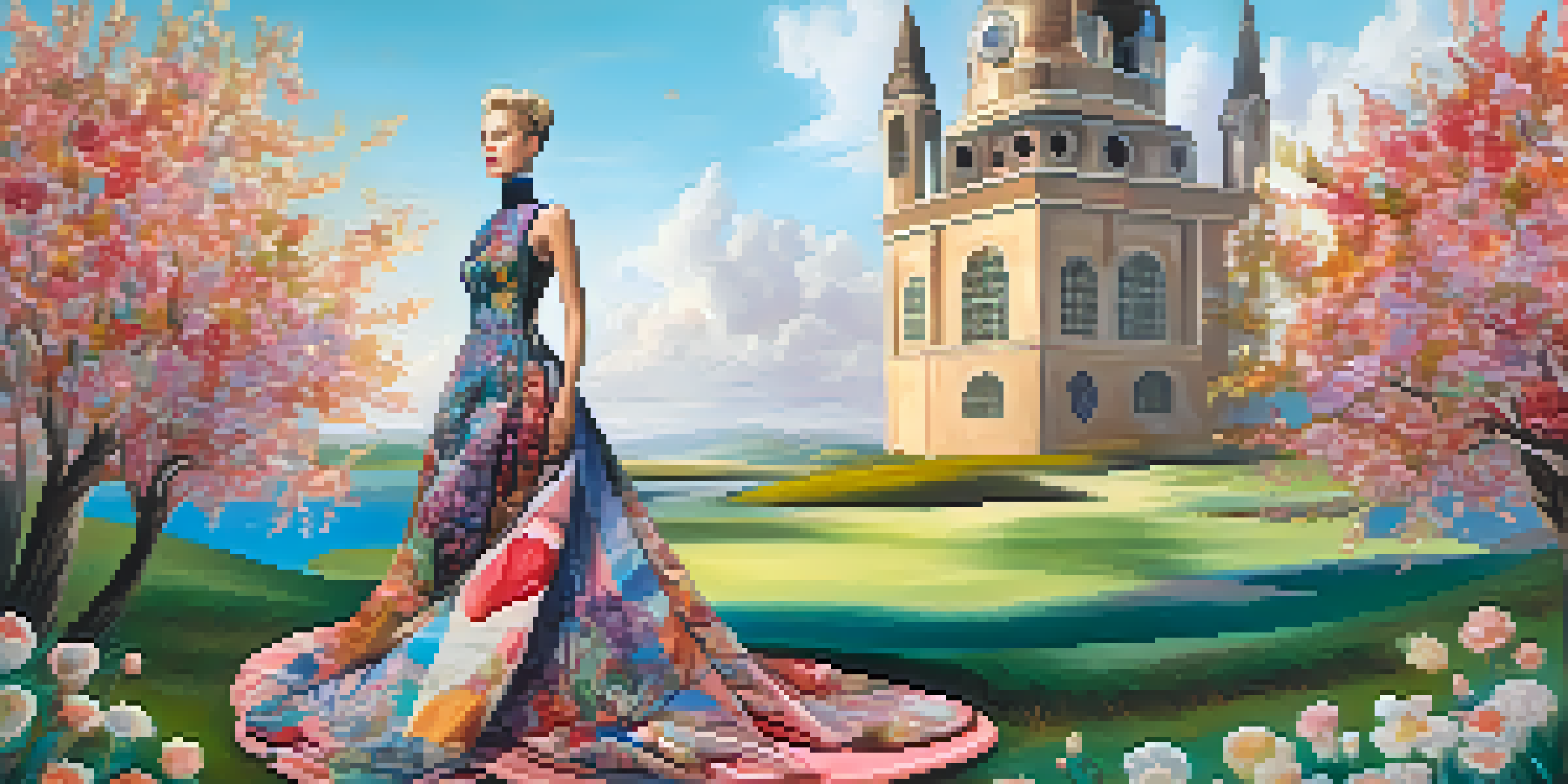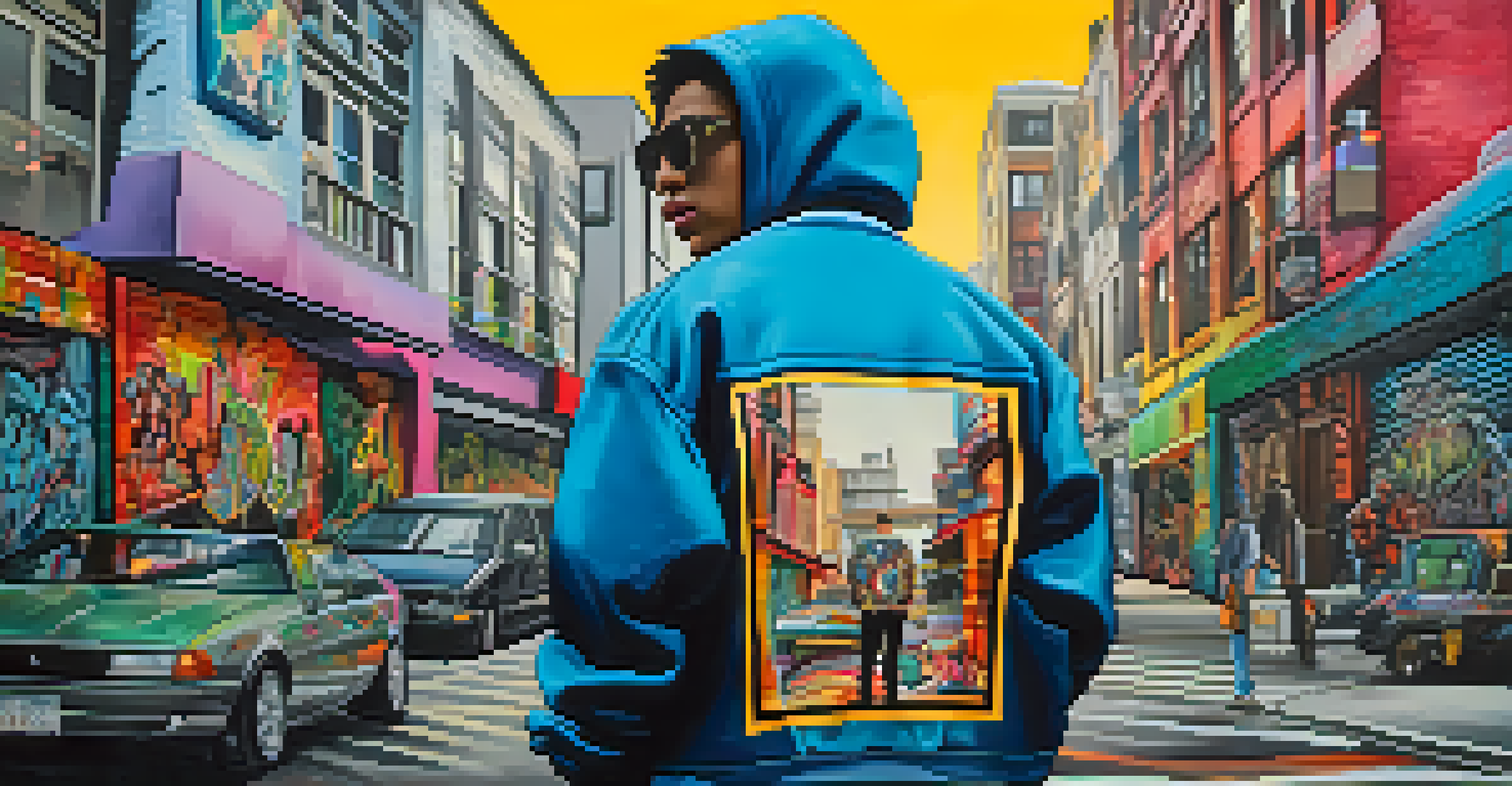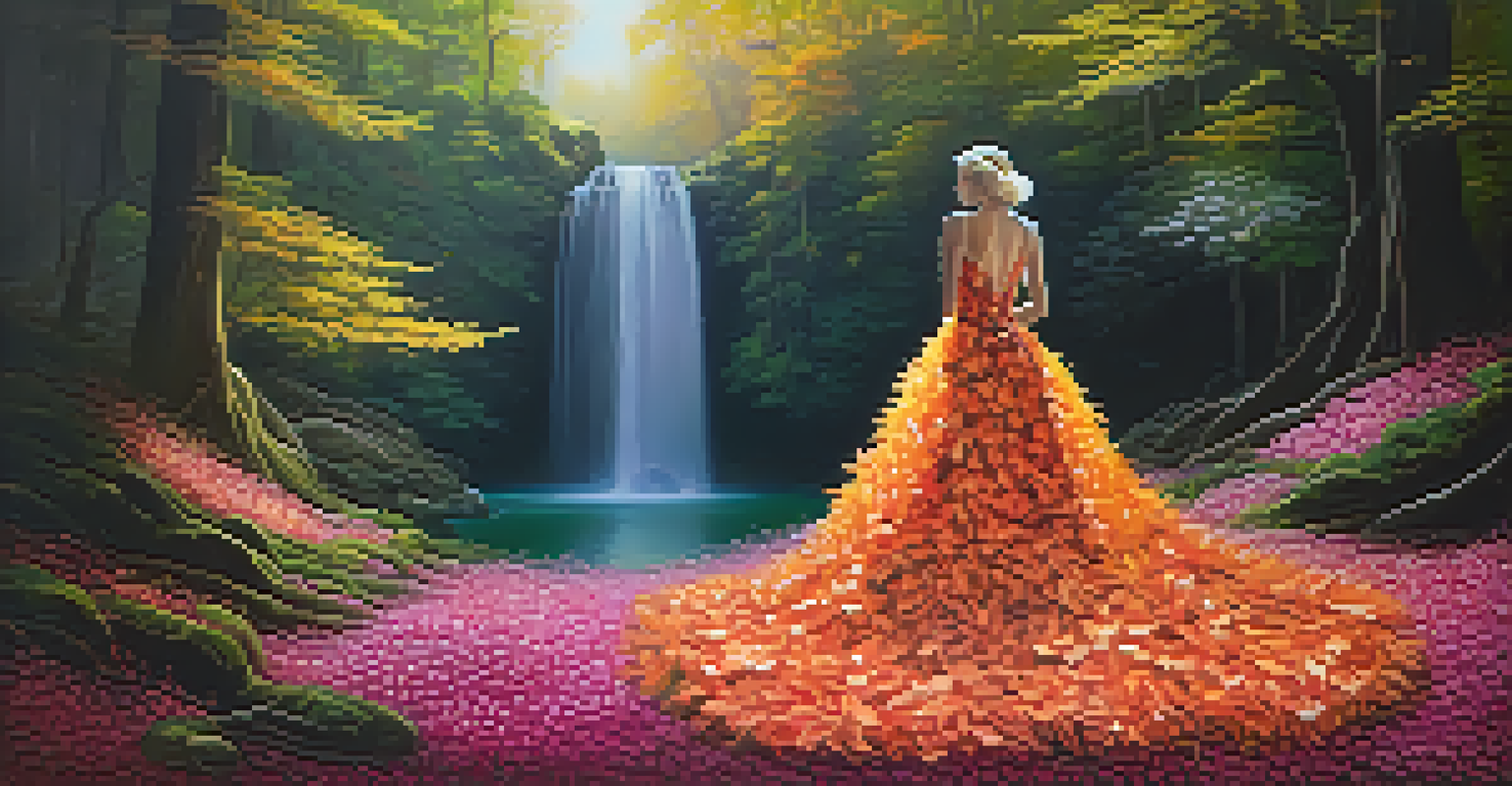The Influence of Surrealism on Modern Fashion Design

Understanding Surrealism: A Brief Overview
Surrealism emerged in the early 20th century as an artistic movement focused on unlocking the unconscious mind and exploring dreams. Artists like Salvador Dalí and René Magritte used unexpected juxtapositions to challenge perceptions of reality. This creative philosophy has transcended art, seeping into various aspects of culture, including modern fashion design.
Surrealism is based on the belief in the superior reality of certain forms of previously neglected associations, in the omnipotence of dream, in the disinterested play of thought.
At its core, surrealism seeks to break free from logical constraints, encouraging designers to reimagine conventional aesthetics. This movement invites a sense of whimsy and unpredictability, providing a rich source of inspiration for those in the fashion world. By embracing the bizarre and the fantastical, designers can create pieces that provoke thought and spark conversation.
The impact of surrealism on fashion is not just about visual elements; it's also about challenging the norms of beauty and identity. As fashion continues to evolve, the principles of surrealism encourage designers to explore deeper meanings and personal narratives within their collections.
Key Surrealist Motifs in Fashion Design
One of the most recognizable motifs of surrealism in fashion is the use of unexpected combinations of materials and forms. Think of a dress that fuses traditional fabrics with avant-garde silhouettes, creating a visual feast that captivates the eye. Designers like Alexander McQueen and Maison Margiela have famously manipulated textures and shapes to craft garments that feel dreamlike.

Another prominent aspect is the incorporation of dream-like imagery and themes. For instance, prints featuring distorted faces or unusual landscapes can transport wearers into a surreal world, adding layers of meaning to their attire. This approach allows individuals to express their unique identities while embracing the eccentricities of life.
Surrealism Transforms Fashion Design
Surrealism inspires designers to break traditional aesthetic boundaries by embracing whimsy and unpredictability.
Surrealism also often involves the blurring of gender lines, breaking away from the traditional molds of masculinity and femininity. Designers are increasingly creating unisex pieces that challenge societal norms, allowing everyone to explore their personal style without restrictions, mirroring the surrealist ethos of freedom and self-expression.
Iconic Designers Influenced by Surrealism
Several renowned designers have drawn direct inspiration from surrealism, shaping their signatures in the fashion industry. For example, Elsa Schiaparelli was a pioneer who infused her collections with surrealist elements, famously collaborating with artists like Salvador Dalí to create pieces that were both wearable and artful. Her designs, such as the 'Lobster Dress,' exemplify the playful spirit of surrealism.
To be surreal is to be free. To be free is to create a world that can be as strange as you wish it to be.
Another key figure is John Galliano, whose theatrical approach at Dior often included surrealist references. His collections were known for their elaborate storytelling, blending fantasy with couture in a way that captivated audiences and pushed the boundaries of fashion. Galliano’s ability to create a narrative through clothing is a testament to the lasting influence of surrealism.
More recently, designers like Comme des Garçons’ Rei Kawakubo have continued this legacy, using surrealism to challenge conventional beauty standards. Her avant-garde designs often evoke thought and emotion, encouraging wearers to question their perceptions and embrace the unexpected in fashion.
The Role of Color and Texture in Surrealist Fashion
Color and texture are vital tools in the surrealist fashion arsenal, helping to evoke emotions and create a sense of otherworldliness. Vivid hues, contrasting patterns, and unexpected fabric choices can transport a garment from ordinary to extraordinary. Designers often play with color palettes that evoke dream-like states, captivating the viewer’s attention.
Texture, too, plays a critical role in expressing surrealism. Fabrics that shimmer, shift, or change under different lighting can create an illusion of movement, much like the fluidity found in dreams. Designers experiment with layering different materials to craft visually striking pieces that challenge traditional notions of beauty and elegance.
Iconic Designers Embrace Surrealism
Renowned designers like Elsa Schiaparelli and John Galliano have infused surrealist elements into their collections, blending art with wearable fashion.
By integrating these elements, surrealist fashion becomes an immersive experience. Each garment can tell a story or evoke a feeling, inviting the wearer and observer to engage on a deeper level, much like a surrealist painting that draws you into its world.
Surrealism's Influence on Streetwear
While high fashion often takes the spotlight, surrealism's influence has trickled down to streetwear, where creativity knows no bounds. Brands like Off-White and Supreme have played with surrealist motifs, introducing graphic designs that challenge perceptions. These pieces often feature bold imagery and playful text, appealing to a younger demographic seeking unique styles.
Streetwear has become a canvas for self-expression, allowing individuals to showcase their personality through clothing that defies convention. The integration of surrealist elements encourages wearers to embrace their quirks and stand out, making fashion a conversation starter in everyday life.
This blending of high art and street style illustrates how surrealism continues to evolve, influencing not just the runway but also the streets. As fashion becomes more inclusive and eclectic, the surrealist movement's core ideas resonate with a broader audience, making it accessible and relatable.
Sustainability and Surrealism: A Modern Twist
In today’s fashion landscape, sustainability is becoming increasingly important, and surrealism can play a role in this shift. Designers are exploring how to use sustainable materials while maintaining the imaginative and whimsical aspects of surrealism. This fusion encourages creativity within ethical boundaries, paving the way for innovative designs that are both beautiful and responsible.
For instance, brands are using upcycled materials to create surrealist-inspired pieces that tell a story of transformation. By repurposing fabrics, designers can craft garments that not only capture the essence of surrealism but also advocate for environmental consciousness. This approach highlights the beauty of imperfection, much like a surrealist artwork that challenges the status quo.
Sustainability Meets Surrealism
The fusion of sustainability and surrealism encourages innovative designs that are both environmentally conscious and artistically expressive.
Ultimately, the blend of sustainability and surrealism offers a fresh perspective on fashion, inviting consumers to appreciate the artistry behind each piece. It reminds us that fashion can be an expression of identity while also being mindful of its impact on the planet, creating a harmonious relationship between creativity and responsibility.
The Future of Surrealism in Fashion Design
As we look ahead, the influence of surrealism in fashion is likely to continue evolving. The movement's core principles—imagination, freedom, and exploration—will remain relevant as designers seek to push boundaries and challenge norms. This ongoing evolution invites a new generation of creatives to interpret surrealism in ways that resonate with contemporary audiences.
With technology advancing rapidly, we might see digital fashion that incorporates surrealist elements, allowing for a virtual exploration of style. Augmented reality and fashion tech could create immersive experiences that blur the lines between reality and imagination, reflecting the surrealist ethos in a new light.

Ultimately, the future of surrealism in fashion design holds endless possibilities. Whether through innovative materials, bold color choices, or unexpected silhouettes, the spirit of surrealism will continue to inspire and provoke thought, ensuring that fashion remains a dynamic and ever-evolving form of art.